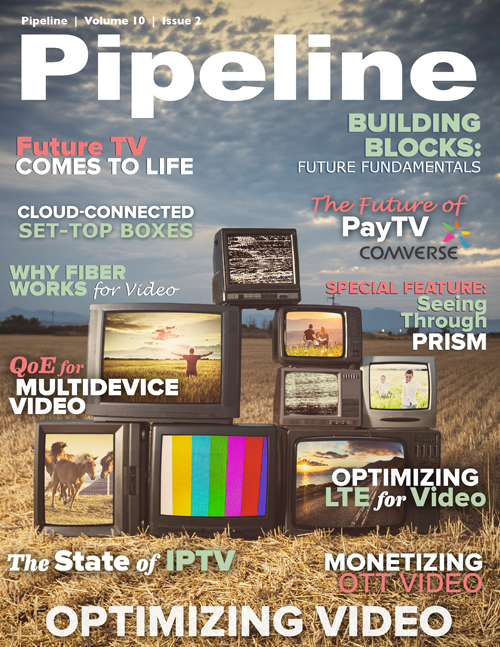Letter from the Editor
By: Tim Young

“I hate television. I hate it as much as peanuts. But I can’t stop eating peanuts.”
—Orson Welles
“The idiot box” is fairly easy to criticize in the abstract. For as long as television has been a popular medium, there have been lousy shows on television. Of course, there has also been a wealth of superior entertainment available to millions of viewers. Within the last decade or so, thanks to the wide range of choices offered by cable and premium channels, there has been a sharp increase in trash TV (Here Comes Honey Boo Boo (TLC), anyone?) as well as some of the highest-quality programming in television history, including series such as The Sopranos (HBO), Homeland (Showtime) and Mad Men (AMC). Throw in the exclusive content now produced and distributed by over-the-top players like Hulu and Netflix and you have a real buffet of the best (and worst) in home entertainment.
Movies are in the same boat. Advances in technology have democratized the filmmaking process in many ways, allowing both good movies and truly abhorrent ones to see the light of day. In a highly circulated keynote at last year’s Just for Laughs festival in Montreal, comedian Patton Oswalt pointed out that a modern smartphone contains more filmmaking technology than Orson Welles himself used to shoot his 1941 masterpiece, Citizen Kane.
But the democratization of video entertainment is about more than shooting and editing your own footage, as Oswalt rightly noted. It’s about distribution, the arena in which communications service providers (CSPs) have faced both tremendous challenges and amazing opportunities in the past decade or so. Consumers love video and want to consume their favorite shows and movies when they want, where they want, leaving providers to ponder the best response to this heightened level of demand.
In this issue of Pipeline we take a look at how CSPs are working to optimize video and make the end-user experience as first-rate as possible without breaking the bank to do it. We also touch on various access technologies as we explore fiber, IPTV and more, and we consider the challenges of a customer experience that’s often distributed across numerous devices, the role that traffic management plays in easing network congestion, and ways to enable high-caliber video experiences. In addition, we examine the evolution of the set-top box and DVR and the growing monetization of OTT video, and, as always, bring you lots more from the world of communications IT.Enjoy,
Tim Young
Editor-in-Chief




















